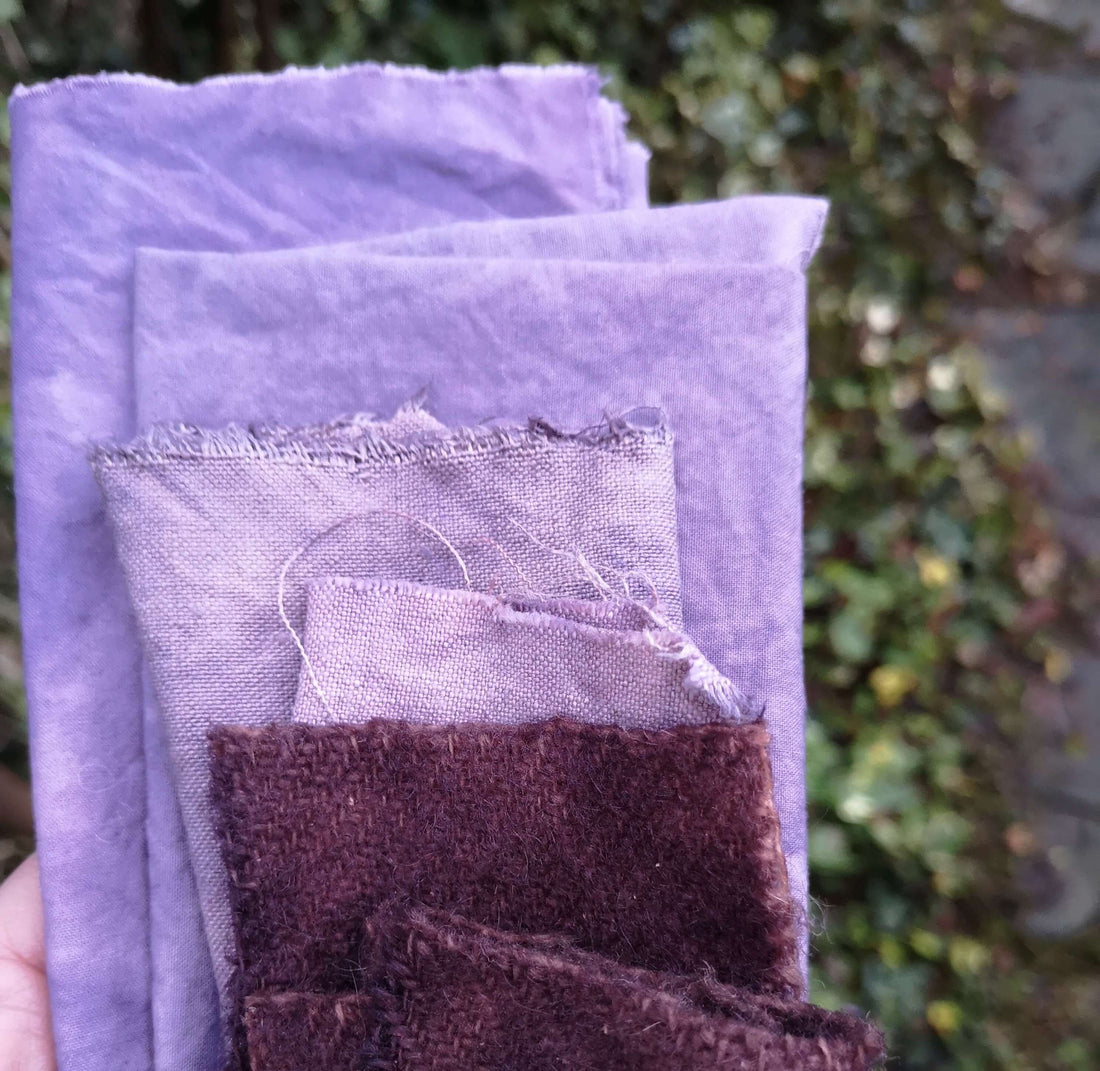
How to Madder Dyeing, Purples and Mauves?
Madder dye kit 1 (mauve/purple)
100g cotton fabric
20g sodium carbonate (soda ash)
100g madder powder
2g iron sulphate
You will need
- Contents of the kit
- A well ventilated space with a controllable heat source for 'cooking' the dye and the fabric
- A thermometer that can be put in liquid and measures up to 100 degrees Celsius (212F)
- A large non-reactive pan with a lid that you will never use for cooking food again. You might be able to find one second hand.
- A plastic bucket
- Tongs or a wooden spoon
- Protective gloves, eg plastic
- Face mask (optional)
Introduction - important reading
You will first prepare your fabric by ‘scouring’ it to clean it of any residual materials from its manufacture. This is important for even uptake of the dye. Next you will prepare a madder dyebath, and then mordant your fabric piece so that the dye will be permanent. Mordanting prepares the fibres so that the dye can fix properly to them. The mordant provided is iron sulphate, which will enable you to achieve a mauve colour, rather than the usual orange/red/pink tones obtained with madder. The use of iron in natural dyeing changes dye colours, so it is really important to keep separate any equipment you use for iron, as small traces of iron left on the equipment can taint later dye experiments.
Just because the dyes and other substances you will be using are 'natural' does not mean they are safe, so please follow safety instructions carefully.
Iron sulphate will stain wooden work surfaces and your hands black, so when you are using this, make sure you cover your surface well and wear gloves.
Wash all equipment thoroughly between stages to avoid contamination.
- Scouring
Simmer the fabric for 90 minutes in the large non-reactive pan with the sodium carbonate (soda ash) and rinse well. Alternatively, put the fabric through the hottest cycle in your washing machine (at least 90 degrees C, 190F) with the sodium carbonate (soda ash) in the drum. You can now dry the fabric (pin a paper label on it saying ‘scoured’ if you are not going to use it immediately), or you can proceed to the next steps straight away.
- Making the dyebath
Place the madder powder into a pan and cover with plenty of hot water from the tap/faucet. Bring the dyebath to 60-70 degrees celsius (140-160F) and maintain at this temperature for an hour. It’s important not to allow the temperature to get higher, or you will get browner/duller colours.
- Mordanting
Half an hour into the cooking time, put the fabric into a bucket of cold water to wet it thoroughly. Ten minutes before the end of the cooking time for the dyebath, remove the fabric from the bucket and wearing gloves, and working on a covered surface (see introduction) add the iron sulphate to the water. Mix well and put the fabric back into the bucket. Stir well to ensure it is well soaked in the iron sulphate solution. The solution may go a pale rusty colour, that’s OK. Leave to soak for about 10 minutes, and then wring out lightly (don’t forget your gloves!).
- Dyeing
Add the fabric to the dyebath and keep it at 60-70 degrees celsius (140-160F) for a further hour. With the fabric left in, allow the dyebath to cool for several hours or overnight, stirring occasionally. Wring your fabric out well and hang out of direct sunlight to dry. Once dry you can brush or rub the fabric gently with your hands to remove loose madder powder. Allow two to three days before washing.
- Washing
Hand wash the dyed fabric with a pH neutral detergent and rinse well. You will see some colour coming out of the fabric into the wash and rinse water, that’s normal. Iron with a hot iron.
by Charlotte Treglown
4 comments
Amazing
Is there an alternative for soda ash for scouring the fabric? can we use ph neutral liquid detergent?
Is there an alternative for soda ash for scouring the fabric? can we use ph neutral liquid detergent?
In scouring process is there an alternative for soda ash? can we use ph neutral detergent?